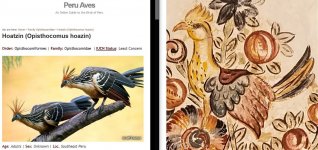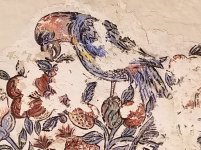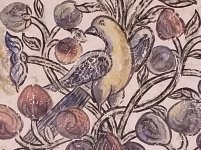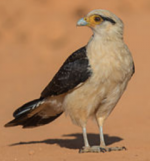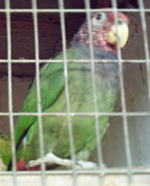Note: This has some new information and possible solution to one of my three images posted yesterday (hope it helps).
Hi, this is my 2nd post of some bird images decorating a convent in Arequipa, Peru. The 1st was solved almost immediately, so this time I am posting three images.
Since these are not photos of birds, but rather artistic renderings, I am including a portion of my blog post (https://www.elenalipkowski.com/blog) with more information and a (painless--I promise) art history lesson:
I have received a potential identification on one image and a link to the source website: http://www.peruaves.org.
The possible identification is Hoatzin. What do you all think?
It was so satisfying to have the last one solved. Hope you all enjoy this puzzle too!
Hi, this is my 2nd post of some bird images decorating a convent in Arequipa, Peru. The 1st was solved almost immediately, so this time I am posting three images.
Since these are not photos of birds, but rather artistic renderings, I am including a portion of my blog post (https://www.elenalipkowski.com/blog) with more information and a (painless--I promise) art history lesson:
"Here’s a reminder of the background information: Santa Catalina Monastery, Arequipa, Peru. This community was built in 1579 in the Andean Mountains and in a city with Spanish Colonial roots. It would be unusual to know when or who did these paintings, as decorative works were usually unnamed and anonymous. However, we do know that they often used local craftsmen (so Inca people) overseen and trained by Spanish artists.
Around here and around this time, the European decorative art styles were used, but the local Inca people substituted their own flora and fauna. The Inca controlled a vast geographic region at this time, so they would be familiar with the Andes, but also the Pacific Ocean on one side and the Amazon region on the other.
These birds might be South American, but they also could be something from the hometown of a Spaniard. So, if a bird has you stumped, but seems somehow seems familiar to something European, you are probably right."
Around here and around this time, the European decorative art styles were used, but the local Inca people substituted their own flora and fauna. The Inca controlled a vast geographic region at this time, so they would be familiar with the Andes, but also the Pacific Ocean on one side and the Amazon region on the other.
These birds might be South American, but they also could be something from the hometown of a Spaniard. So, if a bird has you stumped, but seems somehow seems familiar to something European, you are probably right."
I have received a potential identification on one image and a link to the source website: http://www.peruaves.org.
The possible identification is Hoatzin. What do you all think?
It was so satisfying to have the last one solved. Hope you all enjoy this puzzle too!




